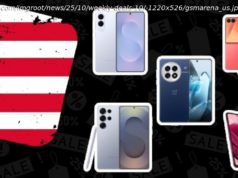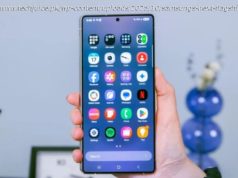Windows 10 updates and leaks are making the Surface Book even more enticing.
Did you know the Surface Book isn’t Microsoft’s latest flagship 2-in-1 laptop? No, that honor goes to the new, and now more affordable, Microsoft Surface Book 2 – now, read our Surface Book 2 review!
The Surface Book made a huge splash in the computing world when it burst out onto the scene way back in October 2015. Now, nearly 3 years later, it’s not hard to see the massive influence the original Surface Book had on the best 2-in-1 laptops.
And, because the Surface Book 2 is as expensive as it is, the original Surface Book is bound to keep an audience for a very long time. It’s an enduring machine that, with a constant flow of updates – like the Windows 10 April 2018 Update, has been growing and evolving since day one.
When you sit and think about the hardware that’s sitting inside the Surface Book, it seems expensive – and it is – but it’s still worth the price of admission anyway. The Surface Book manages to justify its price tag, thanks to it being two devices in one, with an incredibly sharp 3,000 x 2,000 resolution display, competent 6th-generation Intel Core i5/i7 U-series processors and an Nvidia GeForce GTX 940M GPU. We’d even go so far as to vouch for the controversial dynamic fulcrum hinge – even if it’s not as good as the hinge found on the Surface Book 2.
The Surface Book 2 may have a lower starting price now at $1,199 (around £850, AU$1,500), but nowadays you can find the original Surface Book for even cheaper. Of course, you won’t find it brand-new on store shelves unless you’re lucky enough to encounter what little leftover stock lingers, but a refurbished Microsoft Surface Book is still a Surface Book.
If you want to get an idea of the sort of bargains you’ll find on the Surface Book, right now you can pick one up on Amazon for just $908 (about £684, AU$1,222). That price will net you an Intel Core i5, a 256GB SSD and 8GB of RAM. This is hundreds of dollars cheaper than a similarly specced Surface Book 2.
Still, the Microsoft Surface Book stands out for more than its spec sheet. It’s the 2-in-1 convertible design that attracts the masses. While the Huawei MateBook X Pro might have you feeling seduced with its bezel-less design, the Surface Book is available to purchase right now, complete with the detachable screen and native stylus support necessary to make it such an undeniable catch. Plus, it’s cheaper, even if it doesn’t have a webcam hiding under its F6 key.
If a tear in the space-time continuum were to suddenly rip open, two things would fall out: the Terminator and then the Surface Book quickly tumbling to the Earth behind it. From the snake-like hinge, the flat design and even down to the washed-out silver color of this laptop, everything about it just seems like it came from the future.
Milled from two solid blocks of magnesium, the Surface Book feels sturdy and has a most minimalistic style unto its own.
From keyboard deck to the palm rests, the entire interior of this laptop is one flat surface of metal, save for the large space reserved for the glass touchpad. Similarly, the screen lid is made of one uninterrupted slate of magnesium, with its only extra flourishes being a mirror-finished Windows logo in the center and a rear-facing camera.
Along the chiseled sides, you’ll find two flat edges that start from the top of the display and terminate at the tip of the palm rest. That’s not the only seamless transition.
Unlike most other convertible devices, the screen and base sections share nearly the same thickness and weight. Without the foreknowledge that the display can actually detach, the Surface Book looks like one continuous device, thanks to the hinge.
At the midpoint of the Surface Book, there’s a piece of connective tissue that Microsoft calls the dynamic fulcrum hinge. Rather than simply bonding the screen and keyboard base together, it’s this key piece that makes the whole device work.
Rather than folding flatly, the hinge basically coils into itself, leaving a noticeable gap between the screen and keyboard when the unit is closed. When opened, this same part rolls out and actually extends the base of the laptop, which in turn helps extend the support base for the tablet portion of the Surface Book (called the Clipboard).
While a traditional notebook display might weigh half a pound at most, the top section of the Surface Book weighs 1.6-pounds, because it contains all the necessary parts to act as a standalone tablet. As such, the hinge has been reinforced and contains extra mechanisms, not unlike the Lenovo Yoga 900’s watchband-style hinge to keep it in place.
Surface Book is solid as a rock, and you can even pick up it by the display and shake it about without worrying about the whole thing falling apart. On a flat surface, the screen is held steady in place and even stays put when you have it in your lap.
The only times the screen wobbles are when I’m poking at it with my finger or the Surface Pen, but that really comes with trying to operate a touchscreen on any laptop. Fortunately, the hinge on the Surface Book 2 is a lot sturdier, but for a markedly steeper price point. Aside from that, a strikingly similar design carries on to the Surface Book’s more recently released sequel.
To address the concerns of the gap left in the middle of the system. Yes, there is a substantial open space in the middle of the system when it’s closed. No, dust and other bits of nasty will not slip into the interior anymore than with a standard laptop, unless you’re a particularly messy person. After a week of using the Surface Book religiously, I can run my finger against the inside edge of the hinge and not find a single speck of dust.
Another plus side of having a laptop that doesn’t close completely flush is you’ll never find any oily outlines of the keyboard imprinted on the screen. It’s a design element that also eliminates the need to seat the keyboard into a recessed area. Instead, the keys on this laptop sit flush with the keyboard deck.
The keyboard itself offers a splendid 1.6mm of key travel that caps off with a satisfying thwack when you bottom out the keys. The trackpad is equally as enjoyable, with it’s glass laminated finish. For the first time ever, I found myself interested in using the three-finger multi-gestures to rotate through windows and reveal the desktop.
While this is a tiny element of the Surface Book, few – if any – other Windows notebooks on the market today offer such a tight tracking experience.
The Surface Book’s other signature trick is the screen can pop off the base with just the tap of a button. Technically, Microsoft is coming late to the 2-in-1 laptop game with various devices being able to do the same, including Acer’s Switch family, Toshiba’s Click notebooks, some HP devices and the list goes on.
However, no one has made a system as seamless as the Surface Book.
Undocking and attaching the Clipboard is nearly as seamless as the Surface Book’s design.






